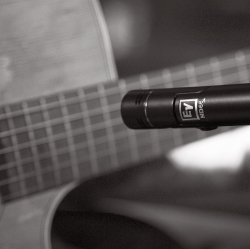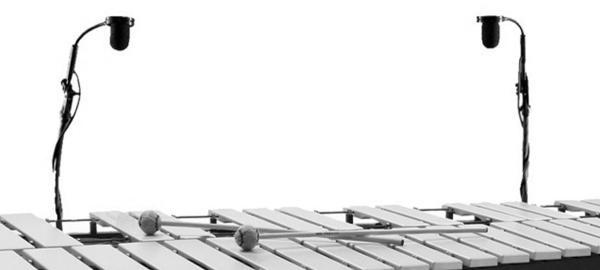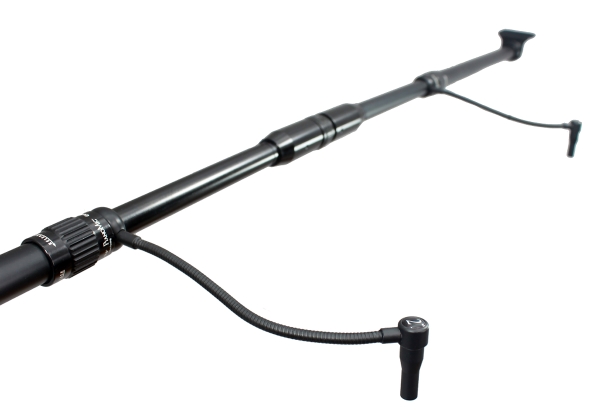
Hand Percussion
For most hand percussion instruments, dynamics like a Shure SM57, Blue 100i, AKG D40, Heil Sound PR20, and so on work well, but if the percussionist is playing softer instruments like shakers, consider opting for a large diaphragm condenser like an AKG P220 or Joe Meek JM37.
Some manufacturers also offer smaller condensers with goosenecks that can clip on instruments like bongos.
Another approach that works well is to clip an omnidirectional lavalier like a Point Source Audio CO-8WL to a performer’s chest. The body acts as a boundary and the percussion sound is picked up naturally.
This works particularly well in an acoustic setting where you don’t want a mic and stand blocking the performer.
Cajón.
Pronounced “Ka-Hon,” it’s a wooden box that’s played like a drum. The percussionist sits on the top and hits different area to different (lower through higher) tones.
Mostly the striking is done with hands, but sometimes the musician will use sticks, brushes or even a foot pedal and play it like a kick drum. Some cajóns have metal inside to give a snare-like snap to the upper tones.
Deploy two mics on a cajón if possible, one placed at the rear pointed at the sound hole for the lower tones and the other pointed at the face where the player hits. I think of it as any other drum and use dynamic mics like SM57s, MD421s and D4s, sometimes opting for a larger diaphragm dynamic for the rear sound hole. If only one mic is available, place it at the front, aimed at the playing surface.
Tympani
These big drums can get quite loud so choose a mic that can take it. I usually capture them individually, placing a large dynamic like an AKG D112 or BETA 52 about a foot away from the head, pointing at the rim.
Chimes
Try to capture them from the rear so as not to get in the way of the player. A large-diaphragm condenser is my first choice.
Mallets
This family is comprised of wooden key instruments like xylophones and marimbas as well as metal key instruments such as bells and vibraphones.
I use the same technique no matter the instrument – position two mics spaced about one-third apart along the instrument length, 2 feet above and 1 foot behind the keys, and pointing at the lower row (whole notes) of keys. Dynamics can work well but I usually opt for condensers such as Joe Meek JM27s.
Piano
There are dozens (and dozens) of fine ways to mic a piano. Earthworks has a system I’d like to try out called the PianoMic PM40. It consists of a telescoping bar with two attached mics.
The bar can adjust to any piano size and the lid can be closed. No stands are required and the mics can be adjusted close to or away from the dampers for a natural sound.
My usual method is a pair of condensers spaced about one-third across the strings, positioned 6 to 12 inches away from the dampers toward the back of the piano. This technique requires an open lid or one that’s close-sticked because the mic stand booms will interfere with closing the lid.
If the lid must be closed, I capture the piano with Audio-Technica AT871R boundary mics (now discontinued), but any good boundary mic will work. A single boundary placed in the center of the lid about 12 inches away from the dampers sounds nice, and two boundaries taped to the lid (positioned as above) sounds even better.
Senior contributing editor Craig Leerman is the owner of Tech Works, a production company based in Las Vegas.


